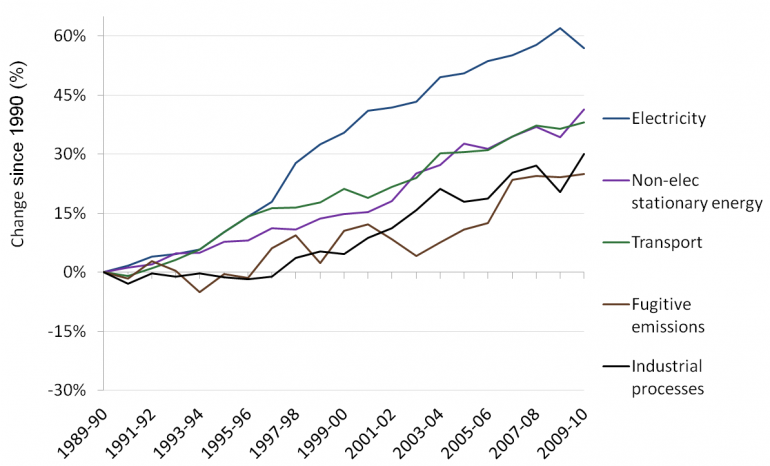Why Turnbull knows better than Abbott: Part I
*For part II of 'Why Turnbull knows better than Abbott', click here.
Yesterday I touched on how Tony Abbott may be missing some of the complexities involved in an emissions reduction scheme based around reducing businesses’ emissions intensity (Abbott's base level logic, September 4). But in many respects it is Abbott’s fellow Coalition colleague Malcolm Turnbull that has inadvertently delivered the most incisive critique.
On Monday Abbott, in all his homespun wisdom, optimistically told the National Press Club:
But Malcolm Turnbull knows better. Turnbull in a speech to parliament in 2010 explained, in all his knowledgeable nerdiness, why energy efficiency by itself was unlikely to reduce our overall emissions:
And, of course, Turnbull went on:
And after quite a few more academic references, he concluded:
Yep, good old Malcolm, he may not be much good at humouring his less intelligent and less well-read colleagues but he is right.
You see, the problem Turnbull was outlining is that while human beings have been great at improving the efficiency with which we turn inputs into outputs, we’re rarely content with keeping the number of outputs we consume constant. Instead, we take the gains from this increased efficiency and use it to produce more outputs and therefore consume the same or even more inputs.
Over the period of 1990-2010, while the Australian economy achieved a 20 per cent improvement in converting energy into economic output, guess what happened to overall emissions growth in energy producing and consuming sectors?
The chart below provides the answer:
Percentage change in Australian greenhouse emissions by sector since 1990
Source: Australian National Greenhouse Accounts – Quarterly update of Australia's National Greenhouse Gas Inventory (December quarter 2012).
A lot of people underestimate the potential for energy efficiency to make it easier for us to substantially reduce emissions at moderate economic cost. But while businesses have an incentive to improve efficiency, they also have a very keen interest in growing their revenue, too.
*For part II of 'Why Turnbull knows better than Abbott', click here.
















